13
MULTIMEDIA
Contents
- Multimedia: definition—Mass media and multimedia
- Characteristics of multimedia system— Computer, integration of elements, digital format, interactive
- Elements of multimedia
- Text—Text font, text effects, text animation, text on the Internet
- Graphics—Image resolution, image color, image file size, image compression, image capture, bitmap graphics, vector graphics
- Audio—Properties of sound, digital audio, sound hardware, sound sampling, sound digitization, music and speech, audio file formats, audio editors, sound compression, selecting a quality audio, audio from a CD to web
- Video—Analog and digital video, video editing, digitizing analog video, video compression, video file formats, video on Internet
- Animation—Process of animation, creation of animation, hardware and software for animation, animation file formats
- Multimedia system—Desirable features of multimedia system
- Multimedia applications—Education, entertainment, training, business, virtual reality
Why this chapter
Listening to music (CD player, iPod or mp3 player), watching movies (CD, Internet), loading photographs from digital camera to the computer, loading the video clip to the computer, watching animation movies, and playing computer games are some of the multimedia applications. You are using multimedia, quite often, almost every day. The purpose of this chapter is to introduce you to the Multimedia and its elements, and the multimedia applications.
13.1 INTRODUCTION
Newspaper and television are the common medium of mass communication. However, they differ in the way they present information to the user. The information in a newspaper is presented as a combination of text, image, and graphics. This has a different impact on the user than the information presented on the television as a combination of image, photo, video, sound and music. Similarly, talking over a telephone (using sound) has a different impact on the user, than, talking using the Internet telephone with a web camera (sound and photo) attached to it. In other words, the same information when presented using different media has a different impact on the user. Or, we can say that the media used for presenting the information affects the way the user perceives and understands the information. Multimedia is a combination of graphics, audio, text, animation, and video using the computer.
In this chapter, we will study the different elements of multimedia like sound, graphics, text, and animation, in detail. This chapter also describes the hardware requirements for the multimedia systems like input and output devices, and the storage requirements. It also discusses the software tools required for drawing images, creating videos, introducing sound effects, and for the compression of multimedia files. Finally, the chapter discusses the penetration of multimedia in our lives, in diverse areas like education, business, training, and entertainment.
13.2 MULTIMEDIA: DEFINITION
Newspaper, radio, television and films are some of the earliest and traditional means of mass communication that use mass media. Newspapers use text, image and graphics, and, television uses text, image, graphics, and sound (Figure 13.1). In these traditional means of communication, the communication is one-way—from the media to the mass users. The user simply reads the newspaper, listens to the radio, and watches the television and films, and, cannot in any way manipulate the media. Mass media is used by the user in a sequence, linearly. For example, a text book consists of a sequence of combination of text, graphics, and images. The text book is meant to be read linearly from the start to the end. With mass media, the user is in a passive state (receiving whatever is communicated).
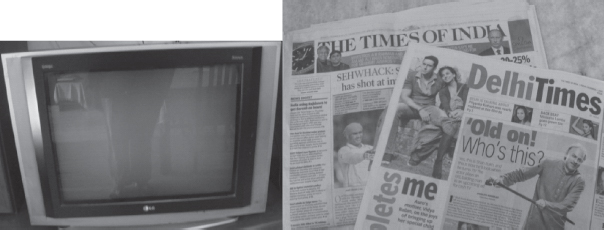
Figure 13.1 Mass media
The word multimedia consists of two words—multi and media. The word multi means many and the word media (plural of medium) are the means through which information is shared. There are different mediums of sharing information like sound, text, image, graphics, animation or video. Multimedia represents information through a variety of media. Multimedia is a combination of more than one media—text, graphics, images, audio, or video, which is used for presenting, sharing, and disseminating the information (Figure 13.2). Multimedia is delivered through the computer and microprocessor-based devices, thereby introducing the elements of interactivity, which differentiates it from the traditional forms of media (also called mass media). Multimedia or Interactive multimedia allows the user and the multimedia application to respond to each other. The user is able to control the elements of the multimedia application in terms of what elements will be delivered and when. Since multimedia systems are integrated with computers, they are also referred to as the digital multimedia system.
13.3 CHARACTERISTICS OF MULTIMEDIA SYSTEM
A multimedia system has four basic characteristics:
- Computer is an intrinsic part of the multimedia system. As a result, multimedia has become interactive. In multimedia, computer allows the user to interact with the media and thus manipulate it by controlling what is to be communicated and when. Multimedia has resulted in the creation of many new possibilities—(1) the computational power of computer is utilized for multimedia applications, (2) the telecommunication network (Internet, WWW) along with the computer enables transmission and distribution of information, and, (3) the use of computer facilitates design and creation of a variety of new applications.
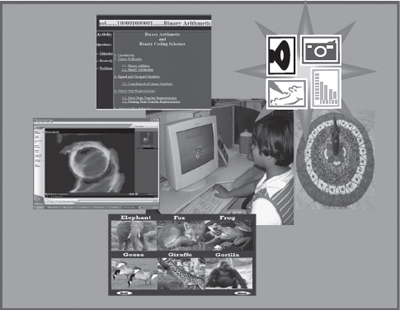
Figure 13.2 Multimedia
- The different elements of multimedia are combined and integrated into a single multimedia system. Special software is required for the integration of different media element files.
- The use of computer in multimedia requires all elements of multimedia to be in digital format. In a digital multimedia system, the media streams are digital and are produced, processed, stored, represented and transmitted using computers. The digital nature of multimedia requires special treatment of the multimedia elements. The hardware and software are needed to convert multimedia elements from analog to digital format and vice versa. There is a need to decide about the resolution versus quality of output required, during storing of data in the computer. Storing multimedia files on computer hard disk takes large amount of disk space, so compression technologies and file formats for storing the different media elements is required. Moreover, special programs are required to play the compressed files. Similarly, special software is required to edit the different media element files, and to combine and integrate the different elements of the multimedia into a single multimedia system.
- Multimedia system is interactive. The user is active and can manipulate whatever is being communicated. Multimedia allows two-way communication. The user can use devices like keyboard, trackball or joystick to interact with the multimedia system. Interactive multimedia is non-linear. The user is able to follow the links and jump from one part of the document to the other. Hypermedia enables a user to gain or provide access to text, audio and video, and computer graphics using links in a non-linear way, using computers. World Wide Web (WWW) is an example of hypermedia application. The user is able to respond and control what to see or hear and when to do it.
13.4 ELEMENTS OF MULTIMEDIA
A multimedia system consists of several elements like—text, graphics, sound, video, and animation. The data streams of these different elements of the multimedia system are of two kinds—time-dependent, and time-independent. Media like text, graphics, and image are time-independent. The information is not dependent on the timing of the data stream when using these media. However, media like audio, video, and animation are time-dependent. In time-dependent media, the data streams must appear at regular time intervals for the purposes of continuity.
The different media elements are described briefly in the following subsections.
13.4.1 Text
- Text is an important element of multimedia. The purpose of using text is to write titles, to define menus, to navigate, and to write the content.
- The text in multimedia is different from the traditional text written using paper and pen. Multimedia text is combined with other elements like graphics and pictures to deliver a powerful effect. Multimedia text can be written in a way that the user needs to jump back and forth, written in multiple channels like pictures, sound, animation, and colored text.
- The text must be short and relevant wherever used. Text is often mixed with art resulting in a much greater impact on the user. Text can also be animated. Text has evolved from being displayed in one size and one color under MS-DOS, to being specified using fonts and color on a color monitor having Windows, to the vector-based text by Adobe which uses graphics-based fonts and creates images.
- Text Font—The text can be written in different fonts: (Figure 13.3) A font is composed of three things—typeface, style and size. Arial, Courier, Times are typefaces. Bold and italics are styles. Size is the length of the character (from top to bottom). Arial 11-point italic is a font.
- Text effects allow special effects to be added to text fonts by adding depth and visual impact (2D and 3D effects). Text effects can be created using MS-Word’s WordArt (Figure 13.4). In WordArt, text is treated as a drawing object, i.e. text can be manipulated like an object. WordArt provides special effects to the text like, depth, direction, shape, color, and texture. Figure 13.5 shows the same text with different text effects.
- Text animation can be used to make the text move, change or flash. MS-WORD and MS-Power-Point can be used for text animation.

Figure 13.3 Using different text fonts
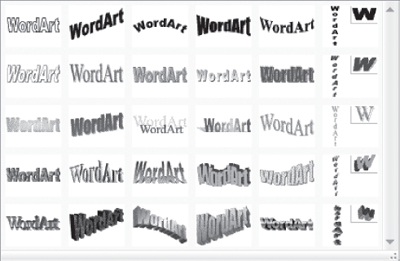
Figure 13.4 WordArt in MS-Word 2007
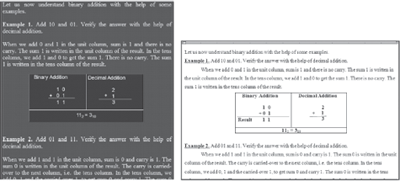
Figure 13.5 Text with different font colour, text effects etc.
- Text on the Internet can be represented as hypertext. A hypertext uses documents to be connected via hyperlink. Using hypertext, different documents can be linked and different parts of the same document can be linked. Hyperlinks allow the user to navigate the document in a non-linear way. Using of hyperlink results in the breakdown of the information into small parts (Figure 13.6).
13.4.2 Graphics
Communication via pictures is easier to understand. Graphics is the most important element of multimedia. Multimedia presentations are predominantly graphics-based. Graphics elements in a multimedia system are images that could be still pictures (like photographs) converted to digital format with the help of scanners, or pictures generated on the computer. They may be 2-dimensional such as photographs, or, 3-dimensional such as objects around us. They may be either static graphic elements or animated. In computer graphics, an image is always a digital image.
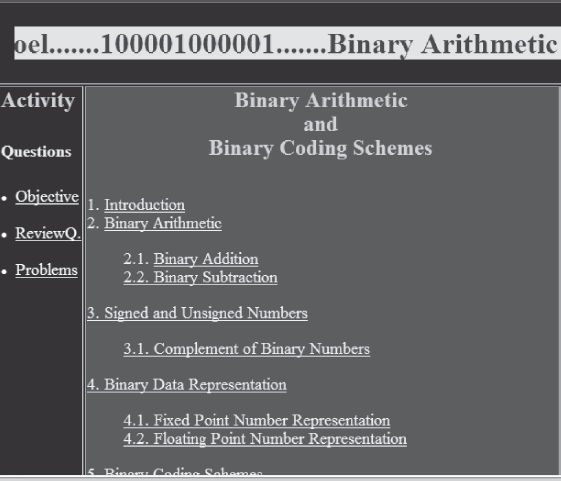
Figure 13.6 Text hyperlinks
- Image Resolution: The resolution of an image is the number of pixels in the digital image relative to the physical size of the original material. Resolution is measured in dpi (dots per inch) and is applied to the image and also to the input and output devices used to scan or print the image. Resolution of monitor is generally, 72 pixels/inch. Higher the resolution, better is the picture.
- Image Color: There are two image color models—Red, Green, and Blue (RGB) model, and,Hue, Saturation, and Lightness (HSL) model. The three colors—red, green, and blue—give us quite a large spectrum by just adding colors. In HSL, the classification of the color circle rests upon three attributes of colors, called Hue, Brightness, and Saturation.
- Image File Size: The image that has been created has to be stored on the computer. The size of adigital graphic is the size of the graphics file on the computer. The size of graphic files is dependent on three things—(i) Dimension ofthegraphics is the physical size (maximum height and width in pixels), (ii) Bit-depth is the amount of color information stored in each pixel, and (iii) the compression used to store the image. The quality and size of the graphics file is dependent on the amount of compression used.
- Image Compression: Usage of compression technologies is important, especially, for graphics usedon the Internet, since download time goes up drastically with increasing file size. While the image is compressed, the quality of the image must not suffer. Two image compression algorithms are widely used on the Internet—Joint Photographic Experts Group (JPEG) and Graphical Interchange Format (GIF).
- JPEG compression works well with 24-bit color images (true color). It is suited for images that contain many colors (such as photographs). Figure 13.7 shows files stored with type .jpeg in Windows XP.
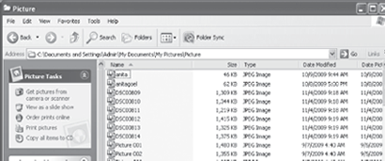
Figure 13.7 Pictures stored as jpeg
- GIF supports 8 bits of color information (Grayscale, Color map). GIF compression is suited to images such as line drawings, for images containing text, and cartoons containing at most 256 colors. It is preferred for vector graphics over the Internet.
- jpg (for JPEG) and .gif (for GIF) are the most common file formats in use on the web. A relatively new file format—portable network graphic (.png), improves upon some of .gif features. Web browsers require plug-ins for .png.
- JPEG compression works well with 24-bit color images (true color). It is suited for images that contain many colors (such as photographs). Figure 13.7 shows files stored with type .jpeg in Windows XP.
- Image Capture: The graphic images on the computer can either be created using editors or can be loaded from the devices that capture the graphics images. Scanner, digital camera, digital video camera, and clip art are devices used for loading images on to the computer. Scanner looks like a photocopy machine and is used to copy an image to the computer. It converts an analog picture into digital format. Digital camera stores digitized images and digital video camera stores digitized images with motion, on the computer. Clip art are built-in collection of pictures on many word processors (Figure 13.8).
There are two types of digital graphics—bitmap graphics and vector graphics.
13.4.2.1 Bitmap Graphics
- In bitmap graphics, computer programs store pictures as pixel maps (bit-maps or raster images). The monitor is divided into a grid of pixels (short form of picture elements). Screen area of 800 × 600 pixels is common on Windows platform. Each pixel contains value representing a particular color. When a picture is sent to the screen, a graphics driver converts the picture data to pixel values on the display.
- Bitmap editors allow creating and editing graphics as bitmaps. For example, to retouch a photograph, just scan it and use bitmap editor to edit it (Figure 13.9). The paint programs and photoediting programs are bitmap-based programs. Some of the commonly used bitmap editors are Lview Pro, GIF 89a, Paint Shop Pro, Adobe Photoshop, Fractal Design Painter, Flash, Corel Draw, Corel Photo Paint, and 3D Studio. Figure 13.10 shows an image to be edited in Adobe Photoshop.
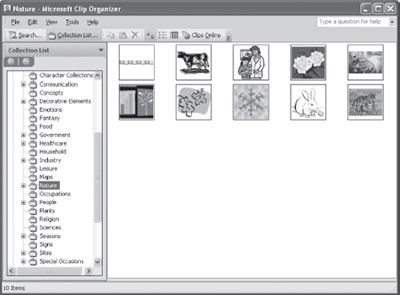
Figure 13.8 Clip art in MS-Word 2007
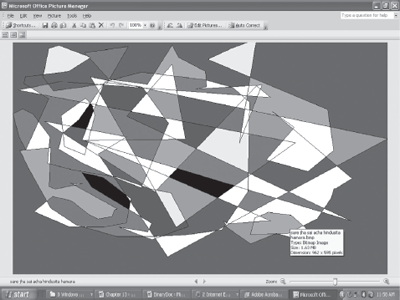
Figure 13.9 A bitmap image
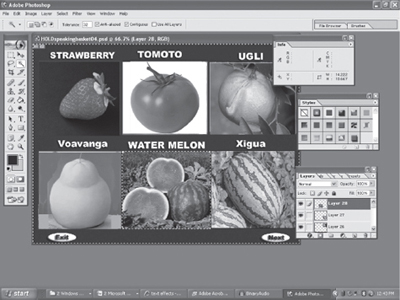
Figure 13.10 Adobe Photoshop
- A bitmap image is stored in the bit-mapped (or raster image) file format. Scanners, digital camera and digital video camera store images as bitmap images.
- Some formats for storing bitmap graphics files are GIF, JPEG, BitMaP (BMP), PostScript (PS), IRIS, and Tagged Image File Format (TIFF).
13.4.2.2 Vector Graphics
- Vector graphics uses various mathematical tracks to create graphics. It uses mathematical equations for the representation of the location, size, color fill, pattern fill etc. Vector graphics is suited for graphic images that require frequent re-sizing (small or enlarge), and repositioning.
- Vector editors allow creation and editing of vector graphics. Vector editor is used to draw cartoons, and to create or modify more complicated graphics such as photographs. For example, a geometric figure (straight line or circle) can be drawn on the monitor by using a mathematical equation. Adobe® Illustrator is an example of vector editor. The Computer Aided Design (CAD) programs, 3-dimensional modeling and animation programs are vector-based programs.
- A picture stored as a vector graphic, when enlarged, appears sharp on the screen in comparison to an enlarged picture using bitmap. This is because in vector graphics the re-sizing requires using different values in the mathematical equation representing the graphics. Clip art image can be stored both as bitmap and vector graphics.
13.4.3 Audio
Sound consists of all possible sounds which may or may not be audible to humans. Audio consists of the sounds humans can hear. For example, the sound emitted by the dog-whistle is heard by dogs but not by humans. The presence of sound enhances the effect of a graphic presentation, video or animation. In a multimedia project, sound can be used in two ways. It can be used to provide audio content in a multimedia system such as, narration for a clip playing on the screen; audio sound tracks in movies; short instructions; or, music to communicate as in a song. Sound can also be used in the background and for sound effects.
- Sound is produced through vibrations and pressure variations in the air. The vibrations generate a waveform repeated at regular intervals (periods).
- Properties of Sound
- Amplitude measures the relative loudness or volume of the sound. It is measured in decibels.
- Frequency or pitch is the vibrations per second. If an object vibrates rapidly, it creates a high-pitched sound. A low-pitch sound is produced by an object that vibrates slowly. The unit of frequency is hertz (Hz). The human ear can hear frequencies in the range of 20Hz to 20 kHz.
- Bandwidth is the difference between the highest and the lowest frequency contained in a sound signal. A signal with frequency range of 200 Hz to 3,200 Hz, has a bandwidth of 3,000 Hz (= 3,200−200).
- Digital Audio―Audio is analog in nature and is a continuous waveform. Also, acoustic instruments produce analog sounds. A computer needs to transfer the analog sound waves into its digital representation consisting of discrete numbers. Representation of a waveform in a digital way is made by an Analog-to-Digital Converter (ADC). The reverse process is called Digital-to-Analog Conversion (DAC).
- Sound Hardware—Microphone and Speakers are the devices connected to the ADC and DAC, respectively. A microphone converts the sound waves into electrical signals. This signal is amplified, filtered, and sent to ADC. This information is then retrieved and edited using a computer. To convert this data into sound waves, the audio data is sent to the speakers via a DAC and a reconstruction filter. This produces the analog sound waves that human beings can hear.
- Sound Sampling—is a process that converts the analog signal into a digital format. Sound sampling transfers a continuous sound wave into discrete numbers. The rate at which the continuous waveform is sampled is called the sampling rate. The rate varies from 5,000–90,000 samples/ second. Sampling rate is an important factor in determining how accurately the digitized sound represents the original analog sound. E.g. CD (Compact Disk) sampling rate is 44.1 kHz (44,100 samples/sec) and telephone quality audio is sampled at 8 kHz.
- Sound Digitization—is the process of assigning a discrete value to each of the sampled values. It is performed by an ADC. Recording at high sampling rates produces a more accurate capture of the high-frequency content of the sound. Along with the sampling rate, the resolution determines the accuracy with which the sound is digitized. The increase in the number of bits in a recording makes the sound playback increasingly realistic. Sound formats are standard in most audio editing software. Sampling rates of 8, 11, 22, and 44 kHz are normally used. There is no loss of quality when reproducing digital audio.
- Music and Speech—Digital audio (music and speech) can be created or synthesized using the computer. Synthesized sounds are a set of instructions to the hardware audio device on how and when to produce sound.
- Musical Instrument Digital Interface (MIDI) format is the most widely used digital format for generating synthesized sound. In MIDI, the actual data is not recorded. MIDI works by recording the keys depressed, time when the key was depressed, duration for which the key was depressed, and how hard the key was struck. Almost all software that support audio can play MIDI files.
- Speech is the natural form of human communication. Speech is time-bound, dynamic, and transient. Distortion and noise are some of the speech effects.
- Audio File Formats—The audio is stored on the computer as an audio file. Some commonly used audio file formats are—Resource Interleave File Format (RIFF) saved with extension (.wav), Motion Picture Experts Group (MPEG) as (mpg, mp2, mp3), or MIDI as (.mid, midi).
- Audio Editors—Audio editors are used to record or manipulate audio files. The editors require a sound card to be installed on the computer. The editors allow the user to perform functions like copy and paste, and, concatenate, append, or mix two or more audio files. Sound effects can be incorporated in audio files using audio editors. Some common audio editing software for Windows are—Cool Edit, Sound Forge XP, Audacity, and Wave Flow. Figure 13.11 shows the icon of Audacity audio editor.

Figure 13.11 An audioeditor software
- Audio Compression—Compression is used to reduce the physical size of data so that it occupies less storage space and memory. Compressed audio files are easier and faster to transfer (small size), and also reduces bandwidth utilization thus providing good sound quality. Since applications exchange audio data using networks, standards like International Consultative Committee for Telephone and Telegraph (CCITT), International Standard Organization (ISO), and MPEG are used to achieve the compatibility. The most commonly used compression scheme for audio is MPEG. MPEG audio coding can compress the original audio on a CD by a factor of 12 without losing the sound quality. Audio files are often encoded in Mp3 (compression ratio is 1:10–1:12) as it is the most preferred format for PC and Internet applications.
- Selecting a Quality Audio—The choice of sampling rate and compression for an audio depends upon its use. Sound that is to be embedded on a web page and downloaded over the Internet uses a low or medium sampling rate with compression. For recording a song on a CD, the highest sampling rate of 44.1 kHz is used. Figure 13.12 and Figure 13.13 shows an audio file in windows Media players and Audacity, respectively.
13.4.3.1 Audio from a CD to Web
The conversion of audio from a CD onto the web is done in two steps—CD Ripping and MPS Encoding.
- CD Ripping—is a process of converting audio CD into .wav format. It uses a program known as the CD Ripper or Grabber. A grabber reads the digital data directly from the CD and stores it as a .wav file on the hard disk. The .wav file produced by CD ripper contains exactly the same information that is on the CD, without any loss of quality. The .wav file is huge (10 MB per minute of sound), and is difficult to store and transfer.
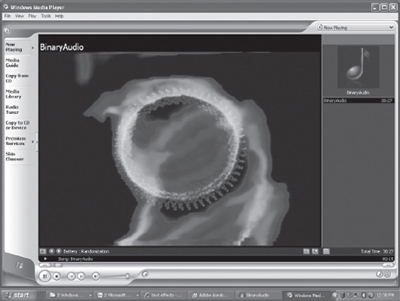
Figure 13.12 An audio file playing on Windows media vplayer
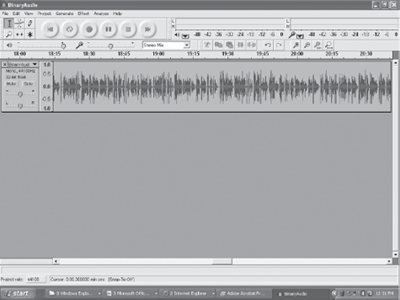
Figure 13.13 An audio file open in audacity audio editor
- MPS Encoding—is the process of converting a wave file into Mp3 format. The size of the MPS file is about 12 times smaller than that of the wave file, while the quality of MPS file is almost same as the original file. MPS encoding removes frequencies that cannot be heard by the human ear (< 20 Hz and > 20 kHz) from the wave file. Sounds masked by other sounds are also removed by MPS conversion. Common MPS encoders are CODEC (user has to pay for it), and mpegEnc v0.07 and MPlifier vO.52 (freely available). Figure 13.14 shows the lame audio software icon.

Figure 13.14 Audio software to convert to mp3 file
To play Mp3 music—
- Get an MPS player (Winamp—Free download from www.mpS.com)
- Get music—from the Web, or create MPS file from CD music. To create MPS file, convert CD music to MPS format.
- Use CD ripper software, (WinDacS2—Free download) to convert the analog signal from audio CD to a digital file. It will create .wav file from CD music.
- Convert the created .wav file to MPS using an encoder v0.06 by SoloH. It takes one hour to do one song.
13.4.4 Video
Video is another element of multimedia. Video and audio are closely related, and together they are the most effective means of communication that can be a part of the multimedia system (Figure 13.15). Digital video is used in making of movies, gaming, and IT industry. The Digital Video Disk (DVD) makes it possible to distribute large videos in a compact form.

Figure 13.15 A video film
- Analog and Digital Video—Digital video allows random access within a movie; cut, paste, or edit video; and addition of special effects. It is easy to duplicate digital video without loss of quality. Digital video also allows for interactivity. The video seen on TV, cable TV, or VCR is broadcast in analog format.
- Video Editing—Digital video is easy to edit. Editing involves removing frames, inserting frames, mixing audio with video, creating special effects on video, superimposing clips, adjusting transparency, and adjusting volume of audio (Figure 13.16). Some of the software packages that support editing are Adobe Premiere, Adobe AfterEffects CS4 and Strata Avid Video.
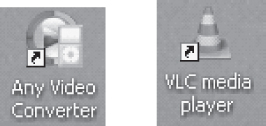
Figure 13.16 Video software
- Digitizing Analog Video—The process of digitizing analog video is called video capture. Video is captured using plug-in cards called video capture cards. A video capture card accepts a video input from an input device such as a VCR or a video camera. The audio is sampled through a separate cable which attaches to the sound card. The software with the video card synchronizes the two channels of audio and video. With the software that comes with the video card, the video capture process is started. Digital cameras can directly store full-motion video in digital formats that can be copied onto a computer’s hard disk.
- Video Compression—Digital video files are extremely large files that take a large amount of disk space, and require high data transfer rates from hard disk to screen. Compression restructures the data to reduce the size of the file. A compressed video file is decompressed when it is played. Several compression/decompression (codec) algorithms are available for compressing digital videos. Codecs may be asymmetric or symmetric; software-based, hardware-based, or both. A symmetric codec takes almost the same time to compress and decompress data. An asymmetric codec takes longer to encode video than it does to decode. Microsoft Video 1, Cinepak and Intel Indeo Video Raw are some of the Window-based codecs. Motion JPEG (MJPEG), MPEG-1, MPEG-2 are examples of the hardware-based codecs.
- Video File Formats—The digital video is saved on the disk in a video file format. The AVI format is used for the PC, and Quicktime format is used for Macintosh. The AVI format is used to play video in the Windows environment. It supports 256 colors to millions of colors, sound from 5 kHz Mono to CD quality stereo sound, and, can deliver video at rates ranging from 0.03 MB/sec to 0.3 MB/sec. Quicktime is similar to the AVI format, and can be viewed on almost every platform available. Figure 13.17 shows a snapshot of Windows Movie Maker.
13.4.4.1 Video on Internet
A video captured in real time from a live source is broadcasted using live camera web site. It takes video input from a video camera and compresses it to a size that can be delivered over the Internet. Streaming video and surround video are the technology that makes video on the Internet possible.
- Streaming Video—allows transmitting of real time video via the Internet, enabling a user to watch the video as it downloads. The video file takes a few seconds to load before starting the image. If the transmission slows down, the reserve of video available to the user’s computer memory is used for uninterrupted viewing. VDOLive, RealVideo, Web Theater, and Stream Works are some of the streaming video products. Figure 13.18 shows a popular video streaming site.
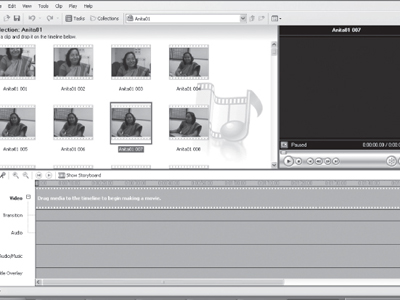
Figure 13.17 Windows movie maker
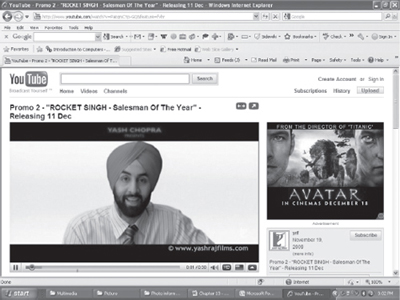
Figure 13.18 Streaming video (http://www.youtube.com/)
- Surround Video—allows the user to turn the image around in a Web page and interact with it from every angle. This is used for displaying products allowing the user to zoom in to any point and click on URL links.
13.4.5 Animation
Animation is creating of an illusion of movement from a series of still drawings (Figure 13.19). To create a feeling of motion of an image (still drawing), the image is projected on the screen as frames. Generally, 30 frames per second are used to make the object appear to be in smooth motion on the screen.
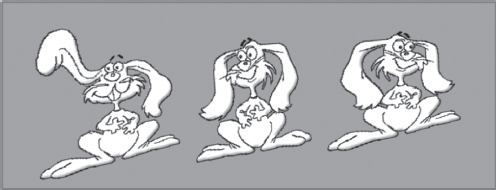
Figure 13.19 Animation
- Process of Animation—requires four steps—(1) Story board layout defines the outline of the action and the motion sequence as a set of basic events, (2) Definition of objects defines the movement for each object, (3) Key frame specifications gives the detailed drawing of the scene of animation at a particular time, and (4) Generation of in-between frames defines the number of intermediate frames between key frames.
- Creation of Animation—Creation and usage of animation using the computer includes processes like looping, morphing, and rendering, which are briefly discussed below:
- Looping is the process of playing the animation continuously. It is used if the animation requires a basic few frames to be created. For example, a hop by a rabbit in 2–3 frames when put in a loop appears as if the rabbit is walking a long distance.
- Morphing means changing of shape. Morphing is the transformation of one image to another. Morphing requires two elements—the shape to be changed and the shape after change. Morphing is used to make the object appear as if it is physically changing its shape. Morphing is used to make an object appear to move, run, dance, expand, contract etc, giving a smooth transformation of the image from one state to another. Morphing with lines, and Point morphing are some processes of morphing.
- Rendering is the process to create an image from a data file. An animation requires about 30 renderings per second. Generally, a whole scene cannot be drawn by the 3-D graphics program inclusive of colors, shading etc. So, what is done is—a rough representation of the position of the object at each point in motion is provided to the rendering package. The rendering package generates the 30 frames required for the rendering which will result in the real motion of the object and thus animation. The rendering time is an important consideration in all 3-D animation.
- Hardware and Software for Animation—The hardware platforms used for animation are—SGI, PC, Macintosh, and Amiga. The SGI platform is used to broadcast quality computer animation productions. PCs use 3D Studio and Animator Studio applications for making animations. Some of the most popular software packages used for animation are—3D Studio Max, Light Wave 3D, Adobe Photoshop, Adobe Premiere, and Animator Studio.
- Animation File Formats—Animation can be in any of the following formats—Flic format (FLI/ FLC), MPEG (.mpg), and Quicktime Movie (QT/MooV). Flic format is used by 3D Studio and DOS-based graphics software packages. MPEG format is used on the Internet since it allows for a much faster file transfer because of its reduced file size. The file size is 40 times smaller than a Flic format file. The Quicktime Movie format is the standard Macintosh animation format, which allows for compression and can contain audio tracks.
13.5 MULTIMEDIA SYSTEM
The multimedia system includes the hardware and software components that are required to be used for multimedia. The hardware and software components required for a multimedia system are as follows:
- Input Devices—Keyboard and OCR for text; Digital cameras, Scanners and CD-ROM for graphics, MIDI keyboards, CD-ROM and microphones for sound; Video cameras, CD-ROM and frame grabbers for video; Mice, trackballs, joy sticks, virtual reality gloves and wands for spatial data; and mouse, touch screen, trackball, tablet, voice recognition system, infrared remotes, magnetic card encoder and reader, 3D input devices, and virtual reality devices.
- Output Devices—CD-quality speakers, Hi-resolution monitors, color printers, specialised helmets, and immersive devices displays for virtual reality, and video devices.
- Storage Devices—Hard disks, CD-ROM drive, Zip drive, DVD drive.
- Communication Network—Ethernet, Token Ring, FDDI, ATM, Intranets, and Internets.
- Communication Devices—Modem, Network Interface Card.
- Computer System—Multimedia Desktop machine, Workstation, MPEG/VIDEO hardware
- Software—Some of the familiar tools for multimedia software are—Word Processor (MS-WORD, WordPerfect), Spreadsheet (MS-Excel), Database (Q+E Database/VB), and, Presentation Tools (MS-PowerPoint). Some of the software tools used for different elements of multimedia are as follows—
- Music Sequencing and Notation—Cakewalk, Cubase, Macromedia Sound Edit
- Digital Audio—Cool Edit, Sound Forge, Pro Tools, Audacity
- Image Editing—Adobe Illustrator, Adobe Photoshop, Macromedia Fireworks
- Video Editing—Adobe Premiere, Windows Movie Maker, iMovie
- Animation—3D Studio Max, Maya
- Multimedia Authoring Tools are programs that help the user in writing multimedia applications. A multimedia authoring tool enables the user to create a multimedia application by linking together objects, such as text, illustration, or music, to present a mixture of textual, graphical, and audio data. These tools are used to make videos, user interfaces, animations, screen savers, games, presentations, and for interactive training and simulations. Macromedia Flash and Macromedia Director are examples of multimedia authoring tools.
13.5.1 Desirable Features of Multimedia System
The hardware and software components used for a multimedia system have a minimum configuration to be used for multimedia. A multimedia system should have the following desirable features:
- Very high processing power—more than 500 MHz of processing speed.
- Large storage units (50 GB or more) and large memory (512 MB or more).
- Multimedia Capable File System to deliver real-time media e.g. video/audio streaming.
- File Formats that allow for compression/decompression in real-time.
- Efficient and fast I/O to allow for real-time recording and playback of data.
- Special operating system that supports direct transfer to disk, real-time scheduling, fast interrupt processing, and I/O streaming.
- Network Support for Internet.
- Software Tools to handle and deliver media, and, design and develop applications.
13.6 MULTIMEDIA APPLICATIONS
Multimedia applications have found their way into different arenas of our life. We are interacting with multimedia applications in the area of education and entertainment that includes sports, laser shows, video games, or animation movies. Multimedia applications have found their way in business—may it be for advertising, marketing, video meetings, result presentations or customer feedbacks. Nowadays, training is also imparted using multimedia applications like simulations and 3D designs. Entertainment parks like Disneyland use virtual reality and multimedia, innovatively design, create, and improve; their games and rides. The following subsections discuss the impact of multimedia applications in different areas of our life.
13.6.1 In Education
Using multimedia for education encompasses the use of video clips, speech and sound, music, animations, and graphics. The use of these multimedia elements impacts the whole learning process and pedagogy. It is always better to visually observe and hear about a topic than only reading it from a book.
- For Students and Teachers—The students are able to actually view the things being taught using graphics, animation or video clips. This brings them more nearer to the topic being taught and has much more impact on the student than only reading from the book. It also helps bridge the gap between theory and lab work. The teachers use multimedia as a tool for delivering more effective lectures (Figure 13.20). They supplement their lectures with PowerPoint presentations, drawings, graphics and 3D graphics. They also use virtual laboratories and simulations to support their lectures, share same physical resource across multiple locations, and reduce capital and operational expenditure.
- Imparting Education—Multimedia has resulted in spreading education to far-off places where students cannot physically go and attend classes. Moreover, a lecture by a teacher cannot be repeated or replayed unless recorded. Multimedia has enabled such recordings on the computer so that the student can view them again and again whenever required. The large diversity of students, who are slow learners, is helped by it. The use of multimedia for imparting education is available in the following forms:
- Self-learning CD-ROMs —One can commonly find in the market, self-learning modules on CD-ROMs for various subjects and for different classes. These modules use graphics, video, and speech, and include training for the subject inclusive of tests and question paper along with evaluation (Figure 13.21).

Figure 13.20 A teacher using presentation for teaching

Figure 13.21 Self-learning CD-ROMs
- E-learning Programs—The universities imparting distance education like IGNOU, have started using e-learning software to impart lectures to the students. E-learning programs are now also being offered by the IITs for the students not physically present at IIT (Figure 13.22). It is popularly referred to as “You can still be in IIT, even if you are not physically at IIT”. E-learning programs require the students to get registered for the program online. The registered student is provided with a username and password, which he uses to log on to the e-learning module to access the lectures, notes and tests based on them. These also enable Just-in-Time training on a specific topic for a person.
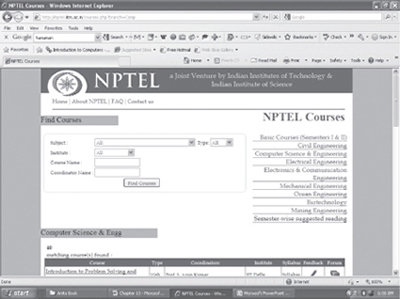
Figure 13.22 E-learning
- Synchronous Learning Technology—This is an initiative for imparting education using satellite communication. In this learning technology, the students are required to attend classes at various computer based learning centers at a fixed time. It is online video lectures, where the instructor delivers the lecture physically at that time at one of the centers, which is being broadcasted and delivered to the students at the computer based learning centers. It incorporates Full-motion video, duplex audio, and two-way Video /Audio/Data interaction creating classroom-like engagement. The students can listen to the instructor, see him/her on their computer screens and respond and interact with the instructor. NIIT Imperia uses this technology for delivering executive management programs (Figure 13.23).
- Self-learning CD-ROMs —One can commonly find in the market, self-learning modules on CD-ROMs for various subjects and for different classes. These modules use graphics, video, and speech, and include training for the subject inclusive of tests and question paper along with evaluation (Figure 13.21).
The use of multimedia in education has made education to be more widely available, effective and entertaining.
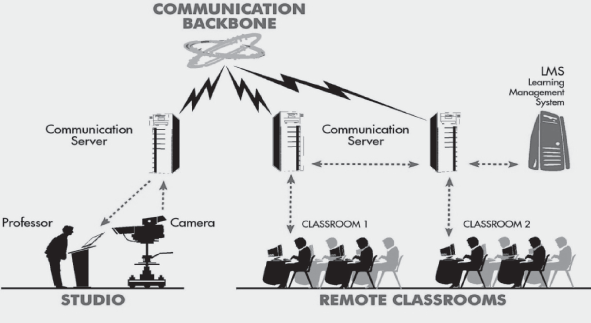
Figure 13.23 Synchronous learning
13.6.2 In Entertainment
Video games and animation movies are some of the common uses of multimedia for entertainment. Gaming is one of the oldest uses of multimedia. It uses the different elements of multimedia to make it more realistic and interactive. The users (especially children) are captivated by the beauty of the game and heavily engaged in using them. The playing of games has its own advantages as it results in the sharpening of mental faculties (requires quick response from the user), allows mixing pleasure with work, and results in enjoyment and relaxation. Nowadays, the games can also be played across the Internet (like chess requiring two players), where the users are located at different physical locations and can interact with each other over a game.
Animation movies are another use of multimedia for entertainment. The movies are generated using animation, and usually sound is provided by a well-known personality. Since the movies are generated using animation, different kinds of movements and effects can be incorporated into it. They are also cheaper than the actual movies. Some of the recent animated movies (Figure 13.24) are—Hanuman (you can see hanuman engulfing the sun, walk in the sky, make a dive etc, which are easy to show using animation than with real characters), Road Side Romeo (sound by Saif Ali Khan, Kareena Kapoor and others), Toy Story 2 (Disney/Pixar), My Friend Ganesha, Bal Ganesha etc.
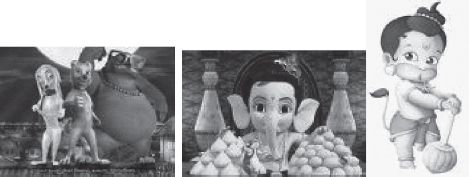
Figure 13.24 Animation movies
13.6.3 In Training
Training is an important ingredient in any organization. Imparting training to employees requires significant amount of effort and resources. There are only a few people in an organization who have training skills and knowledge, to train others. Earlier, training the employees in an organization would require the training team to travel to the location of training, incur expenses (lodging, boarding, traveling etc.), and train the people and move on to next location.
With the advent of multimedia in training, software is developed which can be stored on the CD, delivered over web and used by the employees for training. On-line training and simulation are some other methods which use multimedia for training. In many safety-critical organizations, first the training is provided using simulated software without touching the actual unit. NASA uses simulation to train the astronauts, Maruti in India have car driving centers which trains the aspirant drivers using both simulation-based training and actual car driving (Figure 13.25). Simulation is also used for the training of pilots of airplane, fighter planes and ships. Second Life software is being used to make a candidate familiar with the inside look and feel of an organization before he/she appears for the interview.
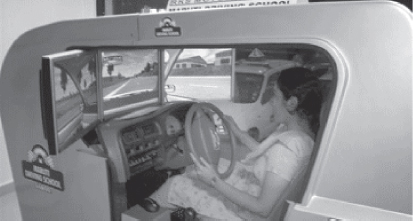
Figure 13.25 Maruti driving school simulator
13.6.4 In Business
Multimedia is crucial for the success of business organizations. In government and non-government organizations, no meeting is complete without PowerPoint presentations and reports generated along with graphs and images. Moreover, businesses use multimedia to further their products and to enlighten people about their products. A CD giving details of the product is used. Car manufacturers, white-good manufacturers like television, microwave, refrigerators and washing machines, cell phone manufacturers etc., rely heavily on multimedia to display their product, market them, and to enhance sales of their product (Figure 13.26). Multimedia is also used by business organizations to train their people, for marketing and advertising, for creating visual and sound effects that are appealing to people, and thus making their product more saleable. Since the information inclusive of all sound and visual effects can be stored on a CD and distributed, it is considered as an inexpensive means of advertising and business promotion.
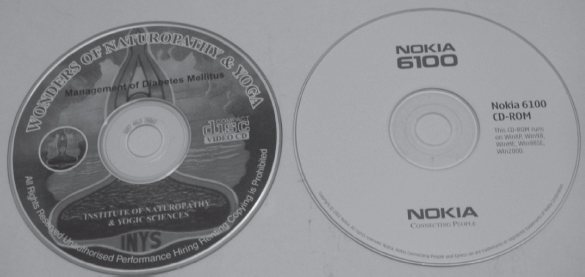
Figure 13.26 Multimedia in business
13.6.5 Virtual Reality
Virtual Reality is created using multimedia. Virtual reality is a special environment that is created using multimedia, where the users feel as if they are in a three-dimensional world. It gives the feeling to the users as if they are participating in the scenario. Virtual reality (Figure 13.27) uses a head-mounted display which consists of two display screens, and, data gloves that are used to record the hand movements. The head-mounted display and the gloves are connected to a computer which has the software for virtual reality installed into it. When the user enters into virtual reality, the position of the head of the user, eyes, and hand movement is used to decide the response; the next view is presented accordingly by the virtual reality software.
- Virtual reality system enables one or more users to move and react in a computer-simulated environment. Virtual reality systems can reshape the interface between people and information technology by offering new ways to communicate information, visualize processes, and express ideas creatively. When a user becomes fully immersed in an artificial, three-dimensional world that is completely generated by a computer, it is called immersive virtual reality.
- The interface devices for a virtual reality system are—(1) Head-mounted display (HMD)—Screens directed at each eye; position tracker, (2) CAVE—Provides illusion of immersion through projection of stereo images on floors and walls, and (3) Haptic interface — Relays sense of touch and other physical sensations.
- There are different forms of Virtual Reality—Immersive virtual reality, Mouse-controlled navigation through a three—dimensional environment on a graphics monitor, stereo viewing from the monitor via stereo glasses, stereo projection systems, and telepresence systems.
- Some examples of Virtual Reality applications are:
- Experimental “gesture technology”: may have military applications
- Medicine: anxiety disorders, pain reduction
- Education and training: anatomy, history, military training
- Real estate marketing and tourism: virtual walkthroughs
- Entertainment: CGI movies and games
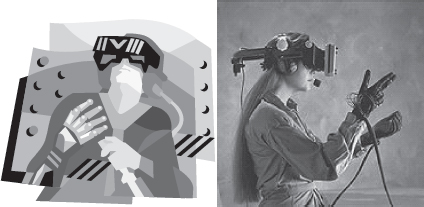
Figure 13.27 Virtual reality
Late Prof. Randy Pausch of Carnegie Mellon University worked in the area of virtual reality and has developed software named “Alice” which is used to make virtual reality software. This software is freely downloadable. His book “ The Last Lecture” (Figure 13.28) mentions the use of virtual reality by Disneyland for their entertainment park (to show Aladdin flying on a carpet etc.).

Figure 13.28 The book “The Last Lecture”
In addition to above applications of multimedia, we can see multimedia pervading into our everyday lives. Kiosks at hotels, railway stations, bus stops are self-help multimedia information centers that provide the users with the necessary information. Multimedia is also used in sports for training purposes and for analyzing the game. Some of the common use of multimedia we mostly see while viewing a cricket match is—viewing if a leg bye was correct or not, whether a player is run out or not, or, at what angle the ball was thrown. In the Hindi film “Chak De India”, the trainer “Shahrukh Khan” uses multimedia to train the hockey players about the placement of the players, their moves etc.
SUMMARY
- Television, radio, newspaper are common examples of mass media.
- Multimedia is a combination of more than one media—text, graphics, images, audio, or video, which is used for presenting and sharing the information.
- Multimedia is different from mass media. Multimedia is delivered through the computer and introduces the element of interactivity.
- Text, graphics, video, audio, and animation are the different elements of multimedia.
- Integrated, digital, interactive and computers are the four main characteristics of a multimedia system. Computers are an intrinsic part of multimedia system. Multimedia is digital since it uses the computer. The elements of the multimedia are integrated to present a single interface to the user. Multimedia is interactive and thus non-linear.
- Text is used for writing titles, to define menus, to write the content, and to navigate. Text in multimedia has features like—text font, text effect, and text color. Text can also be animated. Text can be represented as hypertext on the Internet. The documents linked via hyperlinks allow non-linear access.
- Graphics can be 2D graphics such as photographs or 3D graphics such as objects we see.
- Bitmap graphics and Vector graphics are the two types of digital graphics.
- Bitmap graphics uses pixel information to generate the graphics.
- Vector graphics uses mathematical equations to represent the location, color, size, and color of the graphics.
- JPEG and GIF are the two widely-used graphics image compression algorithms.
- Sound is a key element of multimedia. To store the sound on the computer it has to be converted into digital form and the sound from the computer is converted into analog form to be sent to the speakers.
- Digitization and sampling of sound is required to store the analog sound in digital format.
- The digitized sound can be edited using audio editors.
- Sound can also be synthesized using the computer in MIDI format.
- The audio files need to be compressed to be stored on the disk and to be transmitted through the Internet. MPEG is a popular algorithm for audio compression.
- CD ripping and MPS encoding is used to store audio from CD to web.
- Digital video can be easily stored on DVDs. The process of digitizing analog video is called video capture.
- Streaming video and surround video make the video available on the Internet.
- Animation creates an illusion of movement from a series of still images.
- Looping, morphing and rendering are the processes for creating animation.
- I/O devices, storage devices, communication network, computer and software tools are the hardware and software components required for a multimedia system.
- A multimedia system has features like high processing power, large storage units, fast and efficient I/O, and, multimedia capable file system, and file formats.
- Multimedia is being widely used in areas like education, entertainment, business, and training.
- Multimedia has made virtual reality a possibility. Virtual reality uses multimedia to create an environment where the user feels in a 3D world.
KEYWORDS
Animation |
CD ripping or grabber |
Hyperlink |
Animation movies |
Codec |
Hypermedia |
Audio editor |
Data gloves |
Hypertext |
Audio file formats |
Digital multimedia |
Image |
Bandwidth |
E-learning |
Image capture |
Bitmap editor |
Frequency or pitch of sound |
Image color |
Bitmap graphics |
Head-mounted gear |
Image compression |
Image file size |
Raster images |
Text Animation |
Image resolution |
Rendering |
Text effects |
Interactive multimedia |
Sampling rate |
Text Font |
Looping |
Self-learning CDROM |
Vector editor |
Mass media |
Simulator |
Vector graphics |
Morphing |
Sound amplitude |
Video |
Motion Picture Experts Group |
Sound digitization |
Video capture |
(MPEG) |
Sound hardware |
Video compression |
MPS encoding |
Sound sampling |
Video editing |
Multimedia |
Streaming video |
Video file formats |
Multimedia Authoring Tools |
Surround video |
Video games |
Musical Instrument Digital |
Synchronous learning |
Virtual Reality |
Interface (MIDI) |
Synthesized sound |
Wave format |
Pixels |
Text |
|
QUESTIONS
Section 13.2
1. List the differences between mass media and multimedia.
2. Define: (1) multimedia (2) interactive multimedia.
3. List the elements of multimedia.
Section 13.3
4. What is the impact of computer on multimedia?
5. Describe the characteristics of multimedia system.
6. “The digital nature of multimedia requires special treatment of multimedia elements”. Explain.
7. Give an example of hypermedia application.
8. Name some devices used to interact with multimedia.
9. Define hypermedia.
Section 13.4.1
10. Give two examples of time-dependent multimedia system.
11. Give two examples of time-independent multimedia system.
12. What is the purpose of using text in multimedia?
13. What is text font? Give an example.
14. Explain the meaning of the text font—“Times New Roman 11-point italic”.
15. Give two examples of typeface.
16. What is the purpose of using text effects?
17. Name software used for creating text effects.
18. Name software used for creating text animation.
19. What is the use of representing text as hypertext on the Internet?
Section 13.4.2
20. What is the use of graphics element in multimedia system?
21. _____and_____are two types of digital graphics.
22. In what situations it is best to use bitmap graphics and vector graphics.
23. Define resolution of an image.
24. Unit of measuring resolution of an image is_____.
25. Resolution of monitor is measured in_____.
26. Higher the resolution, the better it is (True/False).
27. Give an example of bitmap editor.
28. Give an example of vector graphics editor.
29. List the three factors on which the size of graphics file is dependent.
30. List two formats for storing bitmap graphics file.
31. Why is image compression needed?
32. The two widely-used image compression algorithms are_____and_____.
33. List two formats used for image file format on the web.
34. Name three devices used for loading images on the computer.
35. Explain in one sentence what they do—scanner, digital camera, and clip art.
Section 13.4.3
36. State the difference between audio and sound.
37. Explain the properties of sound.
38. Define the following—(1) Amplitude, (2) Frequency or Pitch, and (3) Bandwidth.
39. What is the unit of frequency?
40. What is the range of the frequency of sound that the human ear can hear?
41. What is the use of DAC and ADC?
42. What is the purpose of microphone?
43. Define sound sampling.
44. Define sampling rate.
45. The CD sampling rate is_____.
46. Explain the purpose of audio editors.
47. Name two audio editing software for Windows.
48. _____ is the most widely-used format for generation of synthesized sound.
49. Explain MIDI format.
50. Name two audio file formats.
51. _____ is an uncompressed audio file format.
52. Why is compression of sound needed?
53. Name two common compression schemes for audio.
54. Describe the process for converting audio from CD to web.
Section 13.4.4
55. Name two video editing software.
56. Define video capture. Describe the process of video capture.
57. Why is compression of video needed?
58. Name some codec algorithm for video.
59. The digital video is stored on a disk on a PC as _____format.
60. The digital video is stored on a disk on a Macintosh as _____format.
61. _____ and _____ technology makes video on the Internet possible.
62. What is a streaming video technology?
63. What do you mean by surround video technology?
Section 13.4.5
64. Explain the four steps that are required to be followed during the process of animation.
65. What is the purpose of morphing?
66. Explain the process of rendering.
67. An animation requires about_____renderings per second.
68. List two software packages used for animation.
69. The file formats to store animation are _____, _____and_____.
Section 13.5
70. List the hardware and software requirements of a multimedia system.
71. What is the purpose of multimedia authoring tools?
72. Name two multimedia authoring tools.
73. List the desirable features of multimedia system.
Section 13.6
74. Describe the impact of multimedia on (1) Education (2) Entertainment (3) Business, and (4) Training.
75. Explain the use of multimedia in imparting education using (1) Self learning CDROMs, (2) E-learning program, and (3) Synchronous learning technology.
76. What is virtual reality?
77. Give an example of the use of virtual reality.
78. Give two examples for each, of the use of multimedia in (1) Education, (2) Entertainment, (3) Business, (4) Training, and (5) Virtual Reality.
Extra Questions
79. Give full form of the following abbreviations:
- Pixel
- dpi
- RGB
- HSL
- GIF
- BMP
- PS
- JPEG
- TIFF
- ADC
- DAC
- MIDI
- RIFF
- MPEG
- CCITT
- ISO
- HMD
80. Write short notes on:
- Bitmap graphics
- Vector graphics
- Text
- Image compression
- Image File Size
- Sound sampling
- Sound digitization
- Sound compression
- Video on Internet
- Audio from a CD to Web
- Video Compression
- Animation Creation
- Multimedia system
- Multimedia authoring tools
- Multimedia in Education
- Multimedia in Training
- Multimedia in Business
- Multimedia in Entertainment
- Virtual Reality
81. Give differences between the following:
- Mass media and Multimedia
- Bitmap graphics and Vector graphics
- Bitmap editor and Vector graphics editor
- JPEG and GIF image compression
- Streaming video and Surround video
